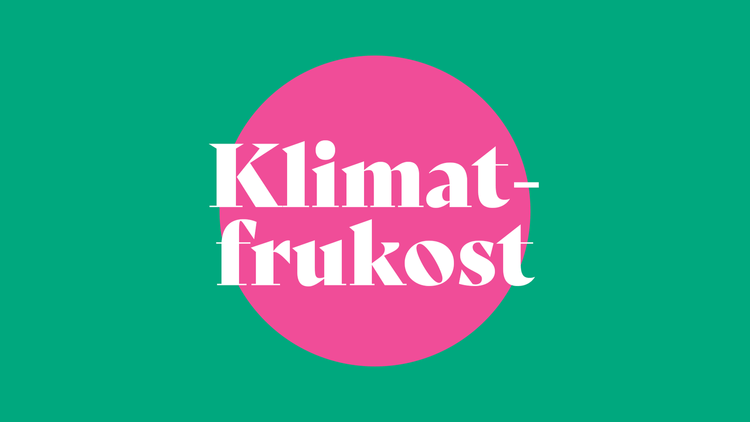Last week, Viable Cities chief storyteller, Per Grankvist, attended the Demo North Conference where 250 decision-makers gathered to talk about how to attract 100,000 people to Norrland, and he gave a keynote address. In his address, Per emphasised the need to put quality of life at the centre of every story in order to succeed in attracting 100 000 people. Read the full keynote here.

On a dark and cold November night 16 years ago, people passing outside some of the dark old buildings belonging to one of Sweden’s largest mental institutions noticed strange noises and what appeared to be glowing lights from inside. The source of the muffled sounds was difficult to locate, and what caused the blinking was also hard to imagine. Moreover, the institution had seen the last patient leave 15 years earlier when the doors were locked one final time.
The Sidsjön Psychiatric Hospital was built in 1942. The large complex of buildings hosted more than 900 patients when it opened, among them 102 people who had been classified as not mentally fit to earn their freedom as citizens and thus to be locked in at this mental institution for the remains of their lives. Sidsjön was created with the best intentions, but as you can imagine, the hospital had a tainted and dark past before its closure around the turn of the century.
Still, on this particular November night, passersby could see the dark old buildings coming alive, somehow pulsating with a rhythm that changed slightly every now and then. The same peculiar phenomenon happened the next night as well. And the night after that.
As some passersby worked up the courage to approach the building and went around the corner to the main entrance, they found something utterly unexpecting, something that would rattle their very core and forever change their notion of what other people are. It turned out that someone had organised a Samba Festival. With more than 40 hours of intense dance workshops taking place over the weekend, where people thrived in Latin rhythms, the festival assaulted every notion one might have of Norrland, the peripheral part of Sweden that only covers 68 per cent of the nation.
As you already know, Norrland plays a crucial role in transitioning to a climate-neutral society. Producing clean energy to meet Sweden’s growing energy needs, producing fossil-free steel for the world’s industries, and producing batteries for future cars are three concrete and significant contributions from Norrland. Each of them has investment plans amounting to unimaginable amounts, many billions.
The number of new jobs needed is also hard to grasp: 100,000 jobs in the next decade. With such a demand, the question is where all these people will come from to work in all these new production facilities, steel mills, and battery factories.
Well, not people from around the region. There are “only” half a million people living in Västerbotten and Norrbotten, and most of them already have jobs. As so often in Swedish history, the answer is “people from outside”, meaning people from other parts of the world than Norrland. This has been the case whenever the government in Stockholm has decided that Norrland should be developed in one way or another in various periods over the past two centuries. The difference this time is the scale of the investments, greater than all previous investments. Yet again, this is to be made possible by people from outside, but this time, one also wants people to bring their families and stay.
How do you make that happen? The availability of getting an exciting job is one of the main reasons why people move. Equally important is that the place where the job is located is perceived as attractive and exciting. This is determined by the stories told about that place, and this is something that has interested me as a part of a government commission called Thriving North, Support for innovation work in sustainable urban and community development in Norrbotten and Västerbotten. I’ve studied how the northern parts of Sweden are usually described and what those stories convey. Are there recurring features that could attract more people if emphasised differently?
Broadly speaking, I’d say that the image of Norrland is drawn with broad strokes. As is well known, stories about the region tend to be dominated by a highly simplified picture based on the physical conditions of Norrland, portraited as consisting of vast forests with a few towns along the coast, understood to be flickering lights in an otherwise dark environment.
The characteristics of the inhabitants are likewise hastily sketched as if they were performed by a passer-by on his way to assignments of importance to the nation: power expansion, ore mining, and establishment of data centres. The northerner stands on the sidelines of all this development and is understood to be headstrong, quiet, buttoned up, poorly educated and lives far from the nearest neighbour.
This is also the image that the inhabitants themselves wrestle with, either reinforcing it with an ironic twinkle in their eye or trying to conquer it by pointing out that things are pretty different.
It is then easy to imagine the shock the passers-by must have felt that November night as they realised everything they associated with Norrland and its people was wrong. The glowing lights illuminated a dance floor, and the muffled sounds could now be identified as samba, salsa, cha cha cha, mambo, bachata, Argentine tango, and Rueda de casino.
I must point out that I am unclear on how many people participated in the festival. The newspaper articles covering this event do not include that figure. But apparently, it must have been successful enough for the organisers to decide to do it again the following year.Those who did show up at the festival showed themselves and the outside world that the image people might have of Northerners was partially wrong. They were neither quiet nor buttoned up as they took to the dance floor, and there was not much distance between them and their nearest neighbours as they embraced each other on the dancefloor. But some of them must at least have lived up to the reputation of being headstrong as they had devised the idea of letting the rhythms bounce between the rapped walls in a former psychiatric hospital.
The stereotypes of Norrland and those who live there are a problem when you wish to recruit 10,000 people to work in mines, mills, and plants and another 9,000 to support the workers and their families in many aspects of life. If you want people to move somewhere, they need to feel that it can give them a high quality of life.
I work at Viable Cities, Sweden’s largest publicly funded innovation program, tasked with helping 23 cities become climate-neutral by 2030. A few of them are in Norrland. Our mission is to help create cities with high quality of life and low emissions. As such, we are spearheading the efforts of the European Union and have inspired the Union to set an ambition to have 100 carbon-neutral cities on the continent by the end of this decade.
My work is around consensus building in city planning, and I have developed a framework for talking about the future in a way that feels emotionally true, is locally relevant and scientifically accurate, where high quality of life and personal identity are important factors. The framework is called “Welcoming Our Common Future” because welcoming our future together is the only way it can be.
Whenever people tell me about their personal ambitions and how they want to be part of the green transformation or create the society of their dreams, a few sentences from Douglas Copland’s novel Jpod (2006) spring to my mind.
The novel is about Ethan Jarlewski and five tech workers whose surnames begin with “J” at a massive Vancouver game design company. The jPodders wage a daily battle against the demands of boneheaded marketing staff, who torture employees with idiotic changes to already idiotic games. Coupland describes an amoral, shameless, and dizzyingly fast-paced universe like ours. In it, there are a few sentences about living your dream.
We’re always hearing about “following your dream” — but what if your dream is boring? Most people’s dreams are boring. What if your dream is to sell roadside corn — if you went and sold it, would that mean you were living your dream?
When talking about the future, another writer, William Gibson, once remarked that the future is already here, only unevenly distributed. That’s an idea for how to tell sci-fi stories, focusing on what will be the same and what will be different in the future. To a large extent, the future is already present in Norrland, where a high quality of life can be achieved without contributing to high emissions.
The problem with discussing the future is that it often sounds boring. It sounds like you’re taking all the fun away in my life. My car, my hamburger, my overseas flights.
Another problem is that the jobs of the future also sound boring. Battery factory. Carbon neutral Steel. Energy production. Boring! Interesting problems to solve, sure, but dull. Most companies engaged in the rapid transformation of Norrland are boring, and that is not something they will be able to fix. Because all jobs sound boring.
So, how do you attract people to boring jobs? Here are five ways.
- Have an interesting problem. It’s that simple. The world is awash in nerds wishing to solve problems.
- Tell people that they will be working on an interesting problem to solve with other interesting people. A good example is Google. They do tremendously dull stuff, but they have a way of excitingly framing interesting problems and inviting new recruits to solve them with other interesting people.
- Pay them a lot. It really is that easy. If you pay well enough, people will do the most tedious jobs. They would be willing to work at an investment bank if you pay enough. I guess that occasionally, there must be some interesting problems to solve, even at investment banks. Still, I suspect most people at those places either work there because they hope to earn enough to do something more interesting later in life or because they are boring and then living their dream.
One must consider the competition when trying to attract talent to Norrland. In Silicon Valley, companies can offer interesting problems that you can solve with other interesting people, and everyone is really well-paid. In Norrland, not so much. But then Norrland has something else that is difficult to match, even for Silicon Valley. This brings me to the next step in attracting people.
- Tell people they will have a better life. Explain to people that what they will get when working for you in Norrland is something they cannot get anywhere else. Zero commuting time. Free schools and daycare. Cities where everything can be reached by bike within 15 minutes. Proximity to nature. The ability to have an active life in all aspects of life. The opportunity to nurture body and mind.
Everything the cities of Norrland have thought to be weaknesses for decades is now their competitive advantage: small, local, reasonable, close to nature, well-organized, closely knitted communities. Remember that for someone moving to Sweden from China, once they accept that they will live in a small town of less than a million inhabitants, they consider Stockholm and Luleå to be roughly the same.
- In your storytelling, make people feel like they are locals. In all the analysis I did, I found that there was one thing that made cities attractive to outsiders and made locals proud. It’s about focusing on what makes the place unique, qualities not immediately apparent to an outsider but that everyone will appreciate once they learn about it. Let me give you some examples:
- People not from Luleå don’t understand that there’s a vast archipelago very close to town. It might look like you are far away once you go there, but you will remain close to the city.
- People not from Kiruna don’t understand that what keeps you warm during those long, dark nights when temperatures fall to minus 20 Celsius is the warmth in your neighbours’ hearts. It’s a very tightly-knit community.
- People not from Skellefteå don’t understand the many nationalities that live in the city and how many languages one might hear, and what that brings to the city in terms of diversity of thinking and cultures.
People who are not from Boden don’t understand why the hospital isn’t actually in Boden; well, no one in Boden either! That’s an easy thing to bond with the locals around. As soon as you start working at H2Steel, you can start muttering about how stupid it is, like a local! Making people understand the city from a local perspective is key to helping people understand what the quality of life would feel like in the city. To get someone to move, they must feel like the place.
To help them feel that, you must also consider who you are targeting. According to research done in many countries, there are basically only two periods in life when people are generally willing to relocate, and the majority of people who move fall into these categories. People either move to get an education or to get a job. They are either between 20 and 25 or between 30 and 35.
Applying a lens of quality of life helps us understand what they are looking for when they move.
- To get friends and get laid. In the first phase, those are the driving forces for finding a place to study. As high-quality education has become available everywhere and online, your alma mater is no longer chosen solely on academic merits. Young people evaluate the social potential of the campus and ask themselves, “Will I have fun there? Will I find laugh and love?” This is why I advise universities that an effective recruitment tactic would be to hand out free condoms to students. It does indeed send a signal about the sort of campus you provide.
- To find a good place to raise kids. In the second phase, people deal with the effects of the first phase. There are jobs everywhere, and some will have you work on interesting problems, but before you accept any offer, you have to think about someone other than yourself, at least if you found a special friend and got laid in the first phase. Before relocating, you want to ensure your kids can get into daycare, that your spouse will find a good job, too, and that you and your family will achieve a high quality of life. This is why I advise cities and companies to offer potential citizens an all-expenses-paid one week in your city where they will be put up in an ordinary apartment to experience what it feels like to be a local.
Someone in Skellefteå told me that they are designing the city to be an optimal place for 35-year-olds because it turns out it also becomes attractive to everyone. Visiting the city, it is also easy to understand how you may live a high-quality life with low emissions in that city. That is the future; if that is your dream, it is already available in Skellefteå.
What outsiders don’t get about Norrland is how quickly you will feel like a local. Getting them to feel the allure of the place as soon as possible, with the help of free condoms or all-expenses-paid vacations in standard apartments, might just be the thing that shatters any notions of Norrland and thus attracts the 100,000 people needed.
Keynote address by Mr Per Grankvist at the Demo North Conference 15th of May 2024.



